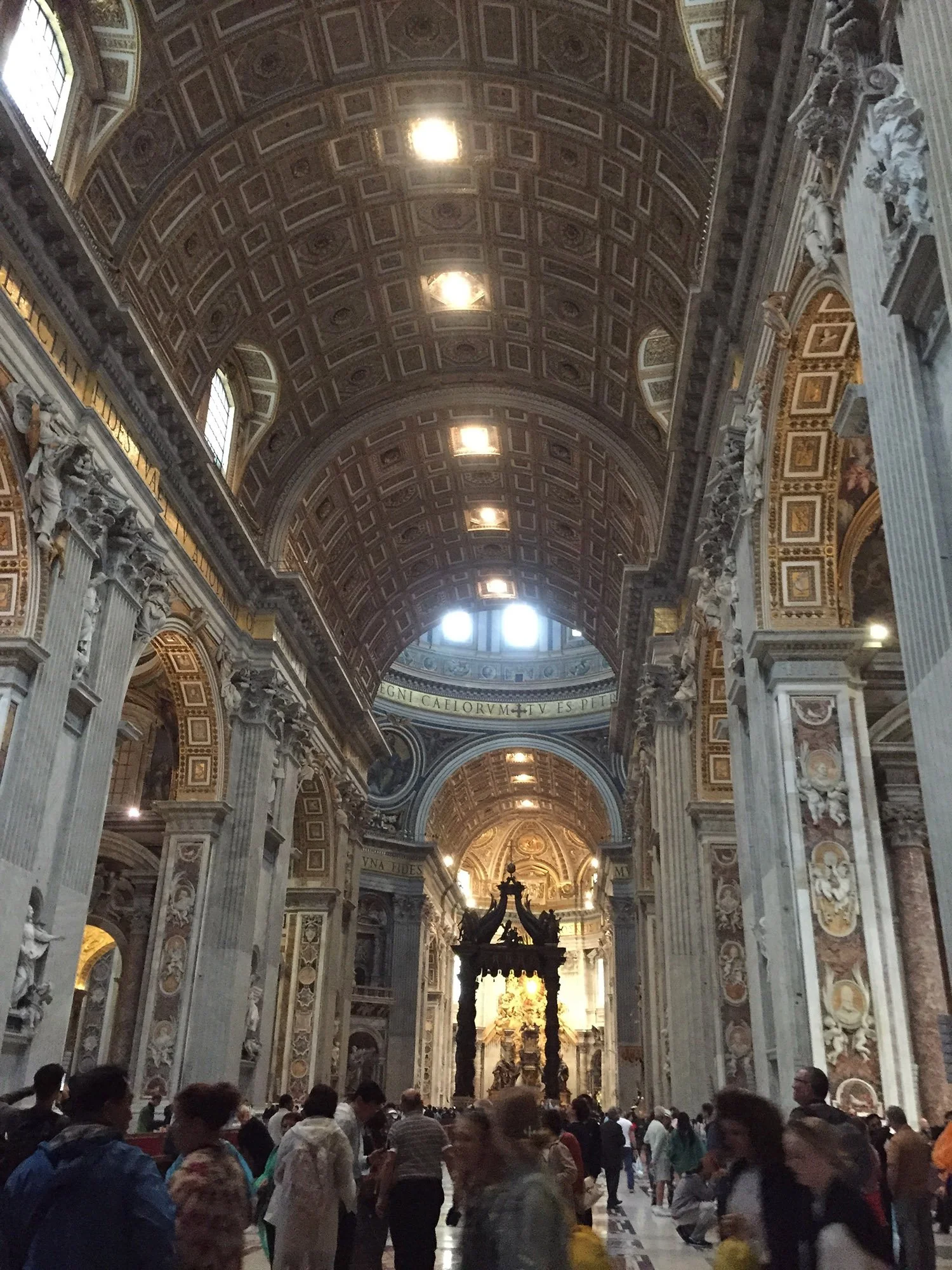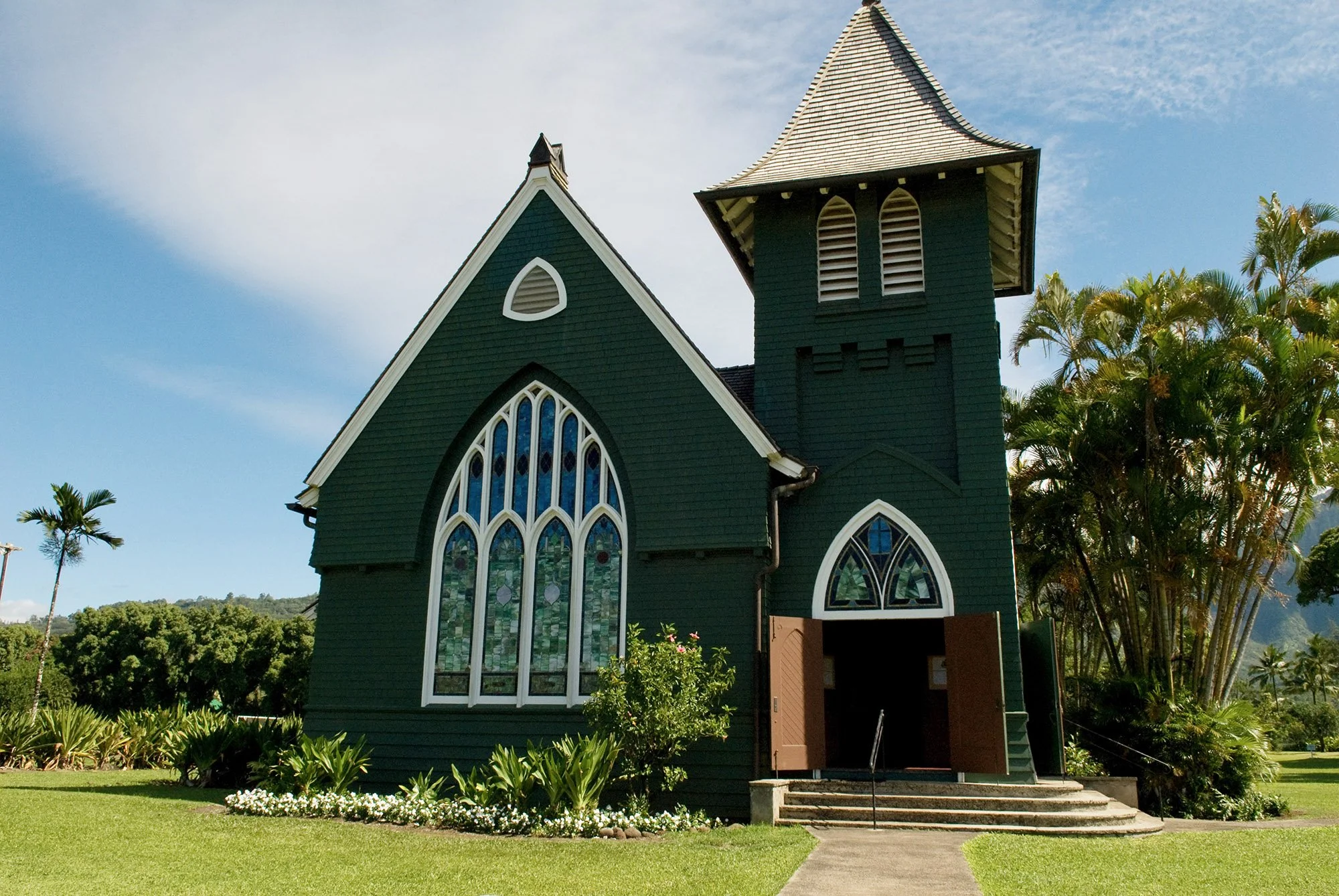Church: A Search for Community
The need for community increases as we age even while the opportunity for genuine connection with others may decrease.
While society in general and churches in particular have their problems, church remains a place to seek and find community.
The writer of Hebrews exhorts Christians not to forsake gathering together, “as is the habit of some,” because God knows people need community.
community––
: a group of people with a common characteristic or interest living together within a larger society
: a body of persons of common and especially professional interests scattered through a larger society
Perpetual Problems & Reconstruction
The church functions as an organization but beneath the edifice, the church universal is a living organism––its people parts of the body of Christ. Imperfect and in decline in the U.S., the church needs people and people need church.
Richard C. Halverson, former U.S. Chaplain, summarized a historical timeline of the church.
National Cathedral, Washington, D.C.
“In the beginning the church was a fellowship of men and women centered on the living Christ. Then the church moved to Greece, where it became a philosophy. Then it moved to Rome, where it became an institution. Next, it moved to Europe, where it became a culture. And, finally, it moved to America, where it became an enterprise.”
The above quote is from an article excerpt I read on April 24, 2025. [1] If you take time to read the article, I agree with the writer, we cannot go back to the past or recreate how we imagine the church used to function, or how any one of us thinks it should function now. But within the models of church that exist today, warts and all, human beings still need community and connection that exists in church.
What’s Your Church History?
Not your church’s history, but your own personal history with church.
My history with churches looks like a patchwork quilt.
Beginning as early as age 5 and throughout my teen years, I attended many different churches. Basically, I took myself to church. No bus ministry. Simply, I went where I could walk by myself.
A lot of my choices of church to attend had to do with proximity and the friends I made at school. For a season, I went to Mormon churches. And later, Catholic. I was drawn by people I knew and admired, in locations where particular faith practices were predominant, Nevada and California.
At age 17, living in Texas, I was baptized in a Baptist church, where I got my first real taste of Bible study. Since then, I have attended churches where the Bible is believed and taught.
Years later, Bible Study Fellowship introduced me to “Interdenominational” fellowship where members from all denominations were welcomed, believers and non-believers together to learn, and where I learned to value the contributions from people who did not see the world through my eyes or have my experiences.
The Bible itself is primary source. As one of my seminary professors instructed: “Read the Bible. It sheds enormous light on the commentaries.”
Yet from the beginning, men have erected towers, altars, monuments and systems, seeking to reach God on their own terms, or more fundamentally “to be as gods.” (See Genesis 3 and 11 KJV.)
The Whole Counsel of God
No one can dispute the origin of the apostles or the importance of the New Testament to understanding the Old Testament.
The New Testament is in the Old Testament concealed.
The Old Testament is in the New Testament revealed.
As the message of the gospels spread, so did the formation of churches in different places among groups of people who heard the life-giving message of Jesus Christ. The history of the church, both Eastern and Western Orthodox, and later Protestants, is a bloody mess. What one group held to, another disdained.
“The Apostle’s Creed” states “I believe in the holy catholic church,” the term “catholic” with a little “c” from the Greek, meaning, “throughout the whole,” or “universal”––the whole church throughout all time and in all places.
In seminary, I gained better understanding of the difference between “catholic” and “Catholic,” as I had heard the terms used interchangeably.
Peter preaching at Pentecost, Acts 2
The Catholic Church believes that the apostle Peter was the first pope. Following the death of Pope Francis, as the Catholic Church meets in the conclave to elect a new pope, their church carries on the tradition, dating back centuries.
Inside the Vatican
By comparison, Southern Baptists formed in 1845 while the Methodist movement began in the early 1700’s. Martin Luther’s break from the Catholic Church took place in 1517, marking the beginnings of Protestantism and the Lutheran church. Episcopal derived from the Church of England in the 16th century. Presbyterian originated in Scotland, led by John Knox in the 16th century with growth further influenced in America by John Calvin. The Presbyterians split during the Civil War and only officially merged again in the U.S. in 1983.
No matter where you start a timeline to follow the history of denominations and churches, people makeup the church. Your church history and mine began long after these traditions came about.
And so, the Church Universal––the holy catholic church––lives on.
“The earliest converts were converted by a single historical fact (the Resurrection) and a single theological doctrine (the Redemption) operating on a sense of sin which they already had––and sin, not against some fancy-dress law produced as a novelty by a ‘great man,’ but agains the old, platitudinous universal moral law which they had been taught by their nurses and mothers, and were written, not to make Christians, but to edify Christians already made.”
Churches formed to teach and edify believers “already made,” welcoming also those who did not believe in hopes that other hearts would respond to the message of salvation and be saved.
“Every day they continued to meet together in the temple courts. They broke bread in their homes and ate together with glad and sincere hearts, praising God and enjoying the favor of all the people. And the Lord added to their number daily those who were being saved.”
Which brings me back to the basic need people have for community.
That word community emerged as the most significant take-away from the four years I spent in seminary. During that time, I attended a mega-church in Dallas, a place where one member of my large Sunday School class characterized this church as a place where people came to “heal after being hurt” in a previous church.
How many of us had this kind of hurt in common? I wondered.
Church is messy.
Churches find their way in and out of messes. The WSJ reported that the Catholic Church is in a financial crisis Pope Francis tried to avert during his term as head of the 1.3 Billion member church.
People are messy.
Still, every church boils down to the people in a local church. Which, if you have read The Screwtape Letters by C.S. Lewis, (or the book of Jude), the Enemy continues to operate within the church, working to build up mutual annoyance among its members–– “pinpricks.”
Community is messy.
A Place with More People to Love
Church on the Island of Kauai
As I continue to read Daily Dispatches from “Sean the Sheep” (see previous post), on Monday, Sean started limping. Tuesday, he’s struggling to walk, questioning his journey, hobbled by his pain––pain in his calf. “No big deal,” he writes.
Only it is a big deal for a person walking the Camino de Santiago––160 miles to go.
Sean cries out against the pain, admitting that he and others like him have carried burdens, feel they “need something,” not even knowing what motivated them to take this 500 mile journey, or what “that something” is. He started praying.
“But somehow, God, we keep walking. Day after day, we meet new friends. Friends whom I know I will keep with me for a lifetime. These are people whose hearts are now dear to my own. So much so that I find myself praying for them instead of praying for myself. I never knew I needed more people to love.”
That last sentence got to me. “I never knew I needed more people to love.”[2]
Like Sean, you and I find ourselves on a journey. A daily walk.
We don’t know what to do with our burdens or “what something” is missing.
Within the church community, we can meet people whose hearts become dear to us, friends we find ourselves praying for instead of praying only for ourselves.
God knows, even if I don’t, I need more people to love.
I am not by nature a loving person. I’m fearful of being hurt.
Ironically, through my church history, in churches and in seminary, I have felt deeply hurt by people. Still, I keep walking. Sometimes, limping, questioning, uncertain.
During the years I taught a BSF class, I remember one lecture where I looked out over the group of women assembled that day, a community of which I was simply a part. In a moment, unrehearsed, unexpected yet heartfelt, I said, “You made me love you. I didn’t want to do it.”
I didn’t want to risk loving people. I didn’t want to risk getting hurt. I identified with the irony, “I love mankind. It’s people I can’t stand.”
I wanted to love Jesus without having to love people.
The years I spent teaching the Bible taught me a lot about people, more about myself, and the most about my own need for community.
Seminary reinforced the need for sound doctrine, for academic study, yes, but following graduation, I wanted more than to “know things.” I wanted most to participate in Christian community. To be where the people are.
Community, like Rome, isn’t built in a day. You spend time forming relationships. You spend time in smaller groups. You engage in small talk. You might earn the privilege to talk about stuff that matters.
Church forms a community within the larger society. You and I need community.
In community, you don’t remain anonymous. You make eye contact. You know and become known. People know you by name.
You never knew you needed more people to love.








